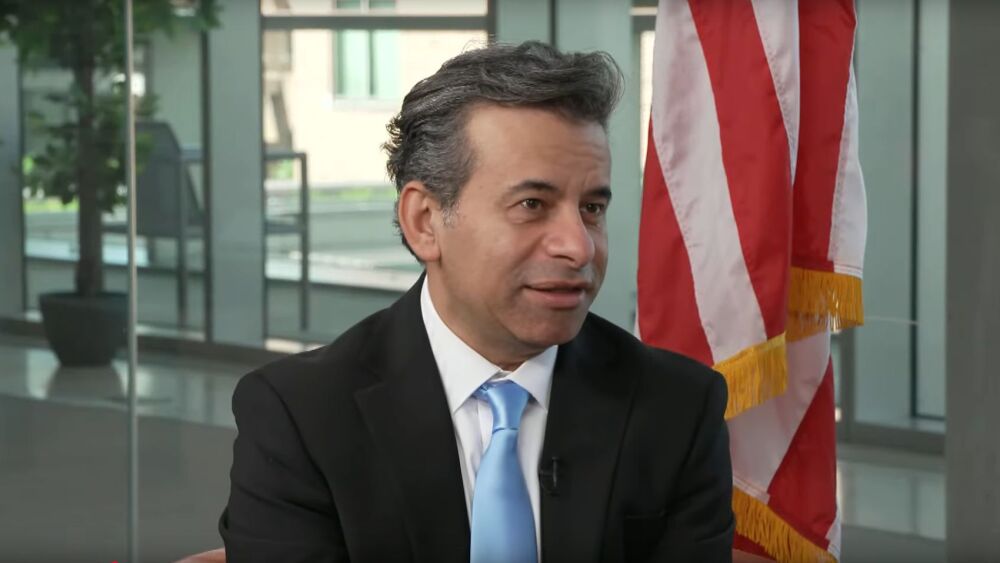As the political winds shift on a whim and public distrust of the pharma industry reaches fever pitch over drug pricing, executives are being asked to navigate an impassible path.
Being a pharma CEO in this moment in history is not for the faint of heart. Policy is changing like the wind. The high cost of drugs has been blamed squarely on drugmakers. The markets are in upheaval. Investors are anxious.
A very select few men and even fewer select women who sit atop the world’s biggest pharma companies must answer for all of this and more. It’s a thankless and lonely gig at the moment, experts say.
“These times are unprecedented. . . . Incredible different forces are at play in the environment that can impact the effectiveness of a CEO, their team and their overall organization,” Susan Sandlund, a managing director at Pearl Meyer who has worked in executive succession and leadership in the healthcare and biotech industries, told BioSpace. “There’s a lot—be it the administration, be it AI, be it other geopolitical issues—there’s a lot to be dealt with, and it’s never been at the levels that it is now.”
Even in the best of times, running a pharma company is not easy. In recent years, it’s gotten even harder, with pharma CEOs now navigating a political minefield. Earnings calls have seen executives peppered by questions on the latest policy from the White House and having to come up with the industry’s response in real time. Many of the choices they are faced with—respond to a policy or face consequences—are prickly catch-22s. That has led to many executives choosing to play along with the Trump administration’s policies.
One thorny policy that pharma CEOs are dealing with right now is the Most Favored Nation drug pricing proposal. While the president has yet to offer a legal backing for the idea, he has asked pharma companies to comply or face the might of the regulatory agencies, from the FDA to the patent office.
“If you talk to different executives, in some cases, there’s a pretty compelling case why they have had to play ball,” Sandlund said. “And it is, maybe, in some cases, giving in, but when you speak with them, they’re saying, ‘But our viability was on the line.’”
Eli Lilly recently announced a plan to raise drug prices in Europe to equalize what other nations pay—but did not go as far as lowering drug prices in the U.S. The move came months after the Indianapolis pharma announced billions in manufacturing spend in the U.S. as the president threatened tariffs on the industry. Trump has indicated that Lilly may be exempt from the tariffs his administration is working on.
“There are different ways to go at problems and to influence,” Sandlund said. “CEOs today have to be a little more facile and agile as far as thinking about what are the alternatives I have in order to solve these issues or address some of these incoming missiles, if you will.”
Whiplash Policy Making
Since he first took office, Trump has threatened tariffs against the pharma industry to bring more manufacturing back to the U.S. While the official policy has not yet been fully unpacked, the president’s every word about the matter sends the markets haywire.
That means CEOs are having to routinely reset their strategies, keeping them stuck in a sort of survival mode, Sandlund said. That short-term outlook may be necessary now, but it’s important not to lose sight of the company’s long-term vision, she added.
The long-term view is also important in considering the pressures on drug pricing, Michael Abrams, a managing partner at Numerof & Associates, told BioSpace in a recent interview. After years of fits and starts at policy to reign in the cost of prescription medicines, CEOs were caught on the back foot as policies like the Inflation Reduction Act and Trump’s Most Favored Nation proposal landed and, at least for now, have stuck around.
“They’re still trying to figure out which way is up at this point, and that has really made the job of CEO that much more difficult,” Abrams said.
Pharma has become the scapegoat for the entire drug pricing issue, even though there are payers, pharmacies, pharmacy benefit managers, providers and more involved in the drug pricing chain. “The communication that has been coming from [the White House] . . . has pretty much laid all the sin of the high cost of healthcare at the feet of the pharmaceutical industry,” Abrams said, noting that both Trump and Biden before him did so. “And that’s not really been helpful.”
Running out of Patience
It’s not all politics. Abrams said that investors have always known that biopharma is “a bit like casino betting.” Today, the industry is changing faster than ever, raising the risk significantly. Driven in part by the rising weight loss sector, healthcare delivery has shifted to a more consumer-based system, a transition that has been hard on seasoned executives.
Executives are also facing more competition than ever from peers. Manufacturing pharmaceuticals has become cheaper, allowing new entrants. With more players in the game diluting the potential market, “investors get nervous,” Abrams said. He noted that competition may have been “relevant” in the departure of Novo Nordisk CEO Lars Fruergaard Jørgensen, which was announced in May.
At the time, the Danish company’s board said it was a mutual decision “in light of the recent market challenges Novo Nordisk has been facing.” Novo’s market cap fell from a high of over $650 billion in June 2024 to just $247 billion as of close on Tuesday, as Eli Lilly’s weight loss drug Zepbound successfully overtook the Danish pharma’s offering.
Jørgensen, who sat in the lead role for eight years, was Novo’s fifth CEO in its 100-year history. He was succeeded by Maziar Mike Doustdar at the end of July.
Over the past decade, the average tenure of a CEO in any industry has declined to around five years, according to Sandlund. Executives are feeling burnout and walking away sooner than they used to.
“It’s the nature of the job in general and also the markets that you’re in. It’s just harder to drive long periods of time than it was, say, 20 years ago,” Sandlund said. “Some CEOs are just saying, after X years, I’ve had enough. That was great, I’m done.”
At Pfizer, CEO Albert Bourla has fought off calls for his resignation as the company’s fortunes have sunk after its rise during the COVID-19 pandemic. He faced an activist investor campaign last year by Starboard Value, which took out a $1 billion stake in the pharma. At first, Starboard brought on former CEO Ian Read and ex-CFO Frank D’Amelio, but both backed off.
Pfizer eventually overcame it, but activist investor rallies in the industry have been increasing, Abrams noted. These campaigns can be one person or a group of investors, with their power to impact change reflected in the percentage of shares they own. “Reflecting their hypersensitivity to risk, they don’t want to extend a lot of patience to executives,” he said. “They want to see the returns that were promised to them in the time frame that they perceive they are due.”
It’s not just activists—all investors are demanding round- the -clock engagement as their appetite for risk deteriorates, Abrams said. A CEO cannot afford to be out of the loop at any time. To be caught off guard on an important regulatory event or find out something in the media could be the end of your tenure. This has become extremely difficult in an era of increasing leaks from agencies like the FDA.
“If other people know more about your business than you do, you’re in trouble,” Abrams said. “If that’s a feature of the business environment that you as a leader must contend with, then you need to have your own warning system and cannot wait for the memo to arrive.”
The Next Generation of Pharma CEOs
Despite all the challenges, people still want to be a CEO, Sandlund said. Perhaps for the fame or the thrill—or the eye-popping compensation.
With the tenure of CEOs declining, Sandlund expects the healthcare space could see heightened turnover in the next few years, meaning those looking to take that executive chair will have more opportunity. Incoming executives should be more geopolitically focused than they had to be in previous years and more externally oriented, she advised. They also need the ability to pivot.
Sandlund also advocated for CEOs that are willing to stand up and enforce their company’s values. Sandlund points to Harvard University, which has resisted the Trump administration’s efforts to freeze funding over claims of civil rights violations.
“In the end, leaders have to have backbones as well. And capitulating isn’t always the answer,” Sandlund said. “Yes, sometimes you do have to capitulate to literally survive. In other cases, maybe that’s not the right thing to do, and maybe that will lose trust.”
Grouping together with other leaders could be helpful in these situations. Sandlund urged CEOs to have a good relationship with their boards to ensure they have access to the right lobbyists or influential people. Being involved in trade groups can help, too.
“I really think standing up and being strong is super important, and that everyone folding is not really a great strategy,” Sandlund said. “There’s power in numbers.”






